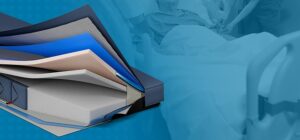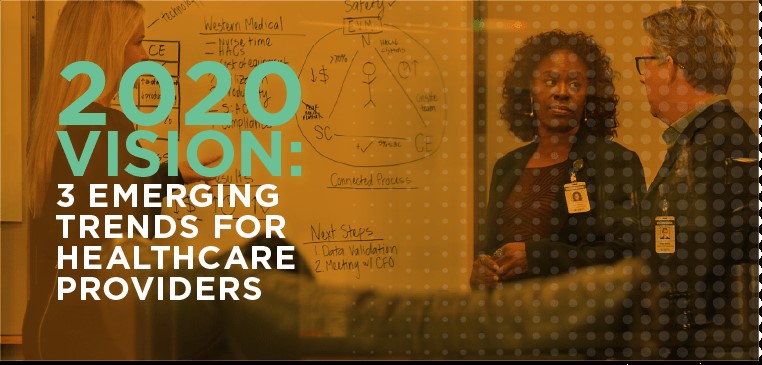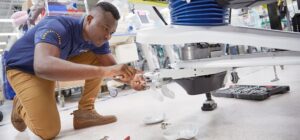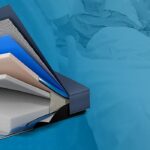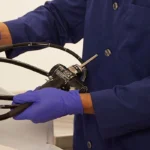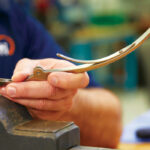Not only does 2020 signify a new year, but a new decade in which healthcare will continue to change and evolve. This year, healthcare organizations will increasingly face new challenges co-mingled with previous concerns, and the way issues are dealt with will set the precedent for years to come.
Here are three trends that we predict will continue to change the healthcare landscape in 2020 and beyond.
1) A Good Time to Buy Medical Equipment?
Innovation in medical devices continues its rapid tear, with every year producing new, increasingly sophisticated technologies. From consumer wearables to 3D printing, the challenge for many facilities is keeping up. Even your standard infusion pump has changed dramatically over the last decade – with smart infusion technology usage up nearly 30 percentage points since 2007.
Boosted by a strong economy, we find many of our customers are looking to upgrade their fleet of pumps, vents or other general biomedical equipment. And they find themselves presented with many new options, accessories and capabilities. Faced with an aging equipment fleet, and the relatively low cost of capital, it’s not a bad time to buy. But just because your facility may be able to afford the upfront costs of purchasing more, is it the smartest investment for your caregivers and patients? The cost of medical equipment is not the only thing you need to account for when making the decision to buy.
Why? Because purchase price is only one piece that makes up the total cost of ownership. Often overlooked is the cost to repair, maintain, upgrade, service, manage, install and train staff on each type of equipment purchased. Also typically overlooked is the low utilization rates of most general biomedical equipment, which averages around 35%. This is largely due to a broken equipment management process and is a big driver in hospitals purchasing more devices than are needed. So how do you know if buying medical equipment, such as infusion pumps, is the best option?
Here are some questions to ask yourself as you decide to buy or not:
- What is the right quantity of equipment required based on patient volume and demand?
- What is the utilization of your current equipment fleet?
- What is the plan to dispose of or manage your older devices?
- Do you have the technical capabilities to support the new equipment – while still enabling technicians to prioritize what they need to accomplish in 2020?
After you’ve determined your baseline data, ask yourself and your team if purchasing equipment will improve efficiencies, affect maintenance costs or – most importantly – provide better patient care.
2) Playing Defense – Device Security is More Important than Ever
It’s scary to think that an infusion pump can be hacked. It’s not just the access to patient data that’s at risk, it’s the ability to control the delivery of medication that is frankly terrifying. As a result, security requirements are increasing substantially as hospitals are tasked with staying up to date in order to keep patient data safe. The scramble we see hospitals make in order to determine what is truly needed while ensuring the best, most secure path forward is chosen ultimately slows down purchasing decisions.
With technology fundamentally shifting the competitive landscape in many sectors, many healthcare providers have no other choice but to innovate their digital transformation strategy in order to deepen relationships with customers.
As healthcare facilities lean on third-party providers for medical device services – such as medical equipment rental, clinical engineering services and surgical laser services – there will progressively be a larger focus on what these third-party providers can offer in terms of device security. In 2020, these securities include building a cloud-centric architecture, leveraging secure enterprises, optimizing the delivery of data and creating a customer-centric culture. These transformations not only drive empowerment of employees but optimize operations and lend themselves to more efficient partnerships with third-party vendors.
Perhaps most importantly, security is not the responsibility of only one party. It requires each stakeholder – the hospital, vendor and OEM – to work together to own their part in securing medical equipment. This means the OEM must design devices that can be secured and identify vulnerabilities while the hospital itself oversees managing the device security. Third-party partners should be ready and willing to help bridge the gap between the OEM and the hospital by helping identify impacted devices, support corrective actions and aid in the identification of potential risks.
When all these stakeholders work together, the focus is put back on the most important goal: patient safety and security.
3) Training and Retaining Employees is a Must
Ensuring patients get the right care, when and where they need it starts with having the right staff. Whether that’s having qualified HTM staff to fix broken equipment or skilled clinical staff making sure patients are receiving exceptional care, your employees are the heartbeat of the hospital. Much is expected of hospital staff. They work long shifts and have ever competing responsibilities. But doing this day in and day out can only last so long in an environment where they don’t feel valued or have a chance to grow. Oftentimes leading to burnout.
With the economy at a high point, unemployment low and employers scrambling to fill open positions, employees can be picky when it comes to where they work – especially in healthcare. That means for healthcare facilities, it’s getting harder to attract staff to fill open positions and even harder to retain them after they’re hired.
A recent survey showed that HTM staff often feel underpaid and overworked, making working conditions difficult. In fact, 60% of technicians report that their workload is “heavy” or “excessive.” And while 1 in 5 technicians are pursuing further formal education to advance their skills, only about half of respondents say their organization offers some sort of personal development as part of their employment.
HTM staff aren’t the only ones feeling the pressure. Unfortunately, a recent survey from AMN Healthcare shows that nurses are burning out at extremely high rates. Not only do nurses feel under-appreciated, but the majority say their employers aren’t addressing the problems being faced. On top of that, a remarkable 44% said they don’t have the time they need to do what they were hired to do – caring for their patients.
What Solutions are on Tap for 2020?
Whether these trends are continuing from 2019 or just beginning in 2020, this year is sure to be another big one for the healthcare industry. Employers can help their clinical staff, supply chain and clinical engineering technicians by making sure the right equipment is available when and where it is needed without breaking the bank as well as providing their employees with opportunities for growth.
If you are serious about improving clinical and financial goals in 2020, Agiliti can help. Contact an expert today to see how we can help decrease wasted spending while supporting improved outcomes.
